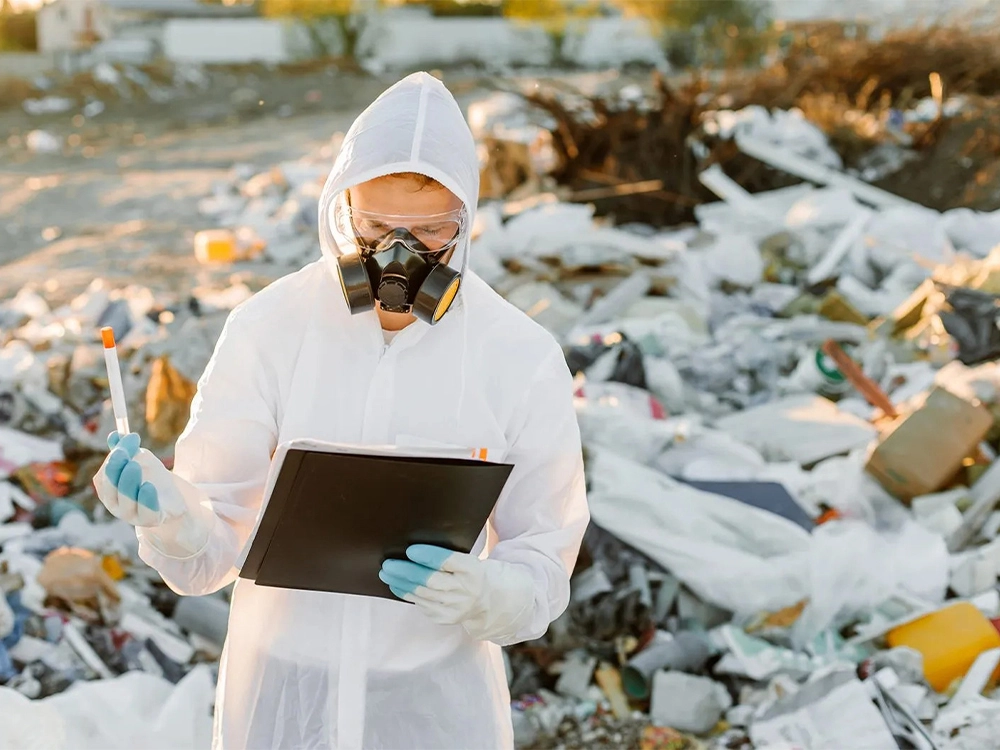Biomedical Waste Treatment: Addressing Environmental and Health Concerns
In the realm of healthcare waste management, “Biomedical Waste Treatment” plays a pivotal role in ensuring the safety of both the environment and public health. This comprehensive process involves various methods and technologies designed to properly handle and dispose of medical waste, minimizing its impact on ecosystems and communities. As the world strives for a sustainable future, advanced biomedical waste treatment solutions emerge as crucial tools in achieving these environmental and health goals.
Table of Contents:
- Understanding Biomedical Waste Treatment
- Defining Biomedical Waste Treatment
- Importance of Proper Treatment
- Methods of Biomedical Waste Treatment
- Incineration: A Traditional Approach
- Autoclaving: Ensuring Sterilization
- Chemical Treatment: Neutralizing Hazardous Components
- Significance of Effective Biomedical Waste Management
- Environmental Protection and Ecosystem Preservation
- Preventing Spread of Infections and Diseases
- Compliance with Regulatory Standards
- Innovations in Biomedical Waste Treatment
- Advanced Disinfection Techniques
- Resource Recovery from Medical Waste
- Integration of IoT and Automation
- Benefits of Sustainable Biomedical Waste Treatment
- Reduced Environmental Footprint
- Resource Conservation through Recycling
- Enhancing Community Well-being
Understanding Biomedical Waste Treatment
Biomedical waste treatment encompasses a series of processes aimed at managing and disposing of waste generated by healthcare facilities, research centers, and laboratories. It involves the proper segregation, collection, transportation, treatment, and disposal of potentially hazardous biomedical waste.
Methods of Biomedical Waste Treatment
The treatment of biomedical waste employs several methods, each catering to specific types of waste and potential hazards. Incineration, a widely known technique, involves controlled burning of waste at high temperatures to eliminate pathogens and reduce waste volume. Autoclaving, on the other hand, employs steam under pressure to achieve sterilization. Chemical treatment neutralizes hazardous elements, rendering them less harmful before final disposal.
Significance of Effective Biomedical Waste Management
Effective biomedical waste management holds immense significance in safeguarding public health and maintaining a healthy environment. Improper handling and disposal of biomedical waste can lead to the spread of infections, contamination of water sources, and disruption of ecosystems. Adhering to regulatory standards ensures that healthcare facilities uphold their responsibility toward the communities they serve.
Innovations in Biomedical Waste Treatment
Advancements in technology have revolutionized biomedical waste treatment. Cutting-edge disinfection techniques, such as advanced oxidation and plasma gasification, provide efficient pathogen elimination. Resource recovery methods, including waste-to-energy processes and material recycling, contribute to sustainability by minimizing waste and utilizing its potential value. Integration of the Internet of Things (IoT) and automation streamlines waste management processes, enhancing efficiency and reducing human intervention.
Benefits of Sustainable Biomedical Waste Treatment
Embracing sustainable biomedical waste treatment offers multifaceted benefits. By reducing the environmental footprint associated with waste disposal, these practices minimize pollution and conserve natural resources. Recycling and recovering valuable materials from medical waste contribute to a circular economy. Furthermore, prioritizing proper waste treatment enhances community well-being by preventing the spread of diseases and promoting a cleaner environment.
Challenges and Considerations
While the advancements in biomedical waste treatment are promising, they also come with challenges and considerations that need to be addressed. One significant challenge is the proper segregation of waste at the source. Healthcare facilities must educate their staff about the importance of segregating different types of waste, such as infectious, hazardous, and non-hazardous waste. This ensures that the waste treatment process is effective and minimizes the risks associated with improper handling.
Another consideration is the economic feasibility of implementing advanced biomedical waste treatment technologies. While these technologies offer numerous benefits, the initial investment and operational costs can be substantial. Healthcare institutions need to weigh the long-term advantages against the upfront expenses and explore funding options or partnerships to facilitate the adoption of sustainable waste management practices.
Moreover, regulatory compliance and adherence to standards play a crucial role in the success of biomedical waste treatment programs. Healthcare facilities must stay updated with local, national, and international regulations related to waste management, disposal, and treatment. Non-compliance not only poses legal risks but also hinders progress toward achieving environmental and health goals.
Collaborative Efforts and Future Outlook
The journey toward effective biomedical waste treatment requires collaborative efforts from various stakeholders, including healthcare providers, regulatory bodies, technology developers, and environmental organizations. By working together, these entities can share knowledge, expertise, and resources to drive innovation and improve waste treatment practices.
Looking ahead, the future of biomedical waste treatment holds great promise. Advancements in nanotechnology, bioremediation, and artificial intelligence are expected to further enhance waste treatment processes. Nanomaterials could be utilized for efficient pathogen inactivation, while bioremediation processes might help break down complex waste components. AI-driven solutions could optimize waste sorting and treatment, leading to increased efficiency and accuracy.
Conclusion
In conclusion, “Biomedical Waste Treatment” is a critical aspect of healthcare waste management that contributes to environmental sustainability and public health protection. The utilization of advanced technologies and sustainable practices ensures the proper handling, treatment, and disposal of biomedical waste, reducing its impact on ecosystems and communities. As the world becomes more environmentally conscious, the adoption of innovative biomedical waste treatment solutions becomes essential for achieving global sustainability goals.
Healthcare institutions, governments, and stakeholders must continue to collaborate, invest in research and development, and implement best practices to create a safer, cleaner, and healthier future. By prioritizing responsible biomedical waste treatment, we can pave the way for a world where healthcare coexists harmoniously with the environment, leaving a positive legacy for generations to come. The journey toward effective biomedical waste treatment is not just a necessity; it is a commitment to the well-being of our planet and its inhabitants.


